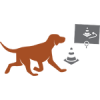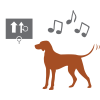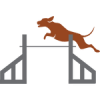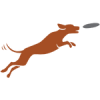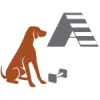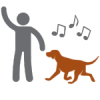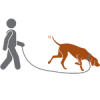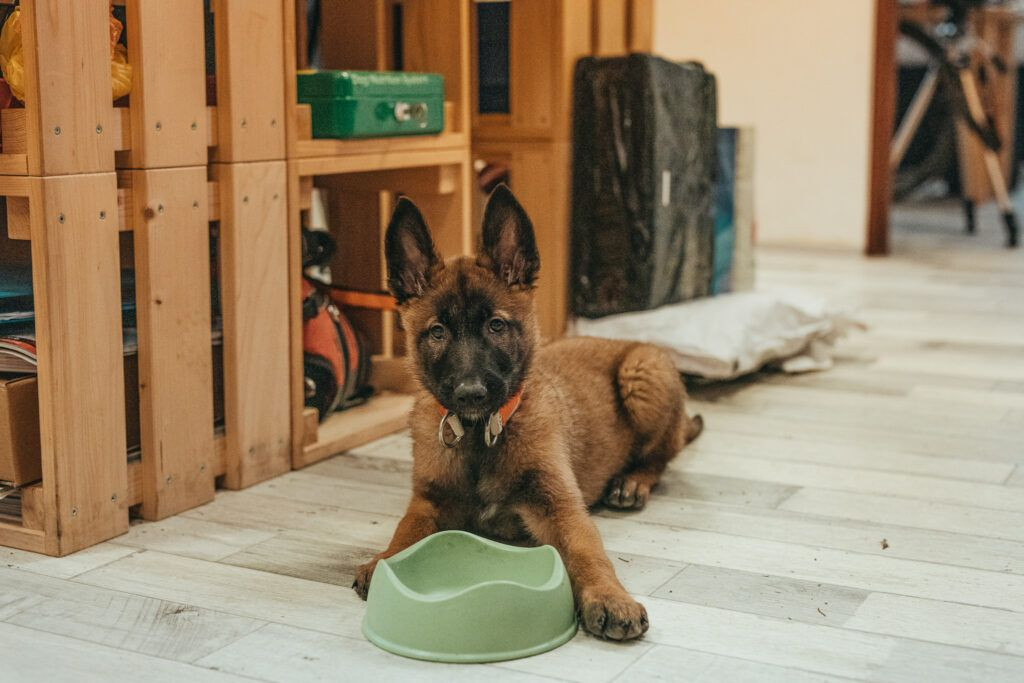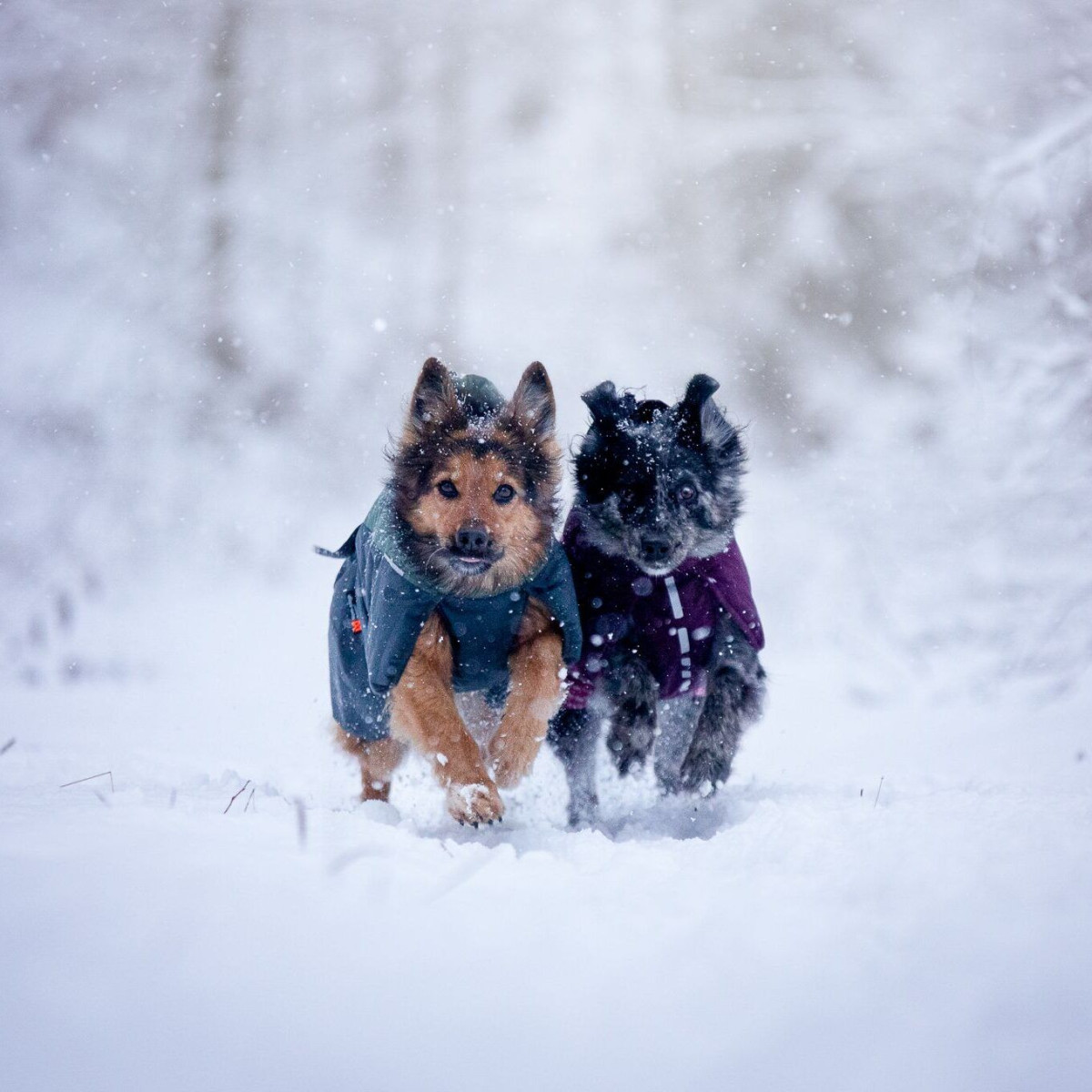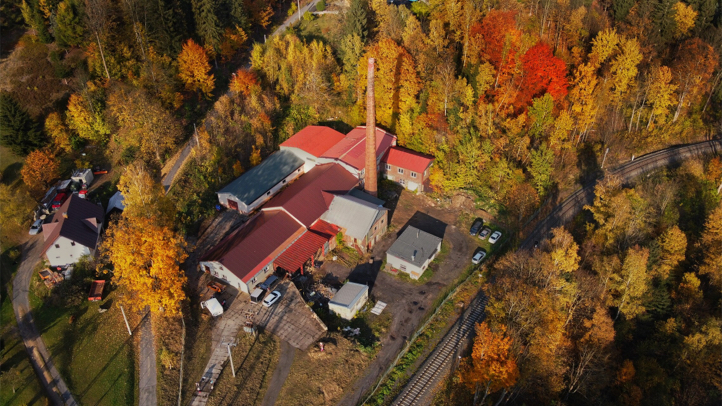A leash is not a failure: why and when to use a tracking line?
Does your furry friend not come running on the first call? That happens, especially if you’re just starting with training. A long tracking line is an ideal tool for training a perfecting recall. Our main goal is to teach our dog to come on the first call, and if that’s not yet 100%, to have control over the dog in other ways.
What is a tracking line?
A tracking line is a lengthy and sturdy leash. Keeping your dog under control is essential. Every responsible dog owner wants to ensure their companion doesn’t get into trouble. But how do you achieve that?
How to achieve a successful recall?
Did you know that if your dog makes a mistake, like running off to another dog instead of coming to you, it takes 50–70 correct repetitions to erase that one mistake? That's why it’s crucial to minimize them. How do we do that? We always think ahead. At first, we let the dog off the leash only in areas where we know they won’t get distracted and will reliably come when called. And when that’s not possible, we simply clip them to a tracking line – our extended arm. You’ll see that progress will be quick, and soon your dog will be the perfect partner for all your adventures.
Let's begin
Starting with a tracking line? How do you keep from getting tangled? On your first walk, you’ll find it requires a bit of skill.
1) Safety first
The leash should always be attached to a harness. If the harness allows attachment from underneath, that’s even better. In case the dog decides to run off and you stop them with the leash, the impact can be unpleasant for the dog when using a collar, there’s a risk of injuring the neck or getting choked. But with a harness, your dog won’t be harmed.
So rule number one: never attach the tracking line to a collar!
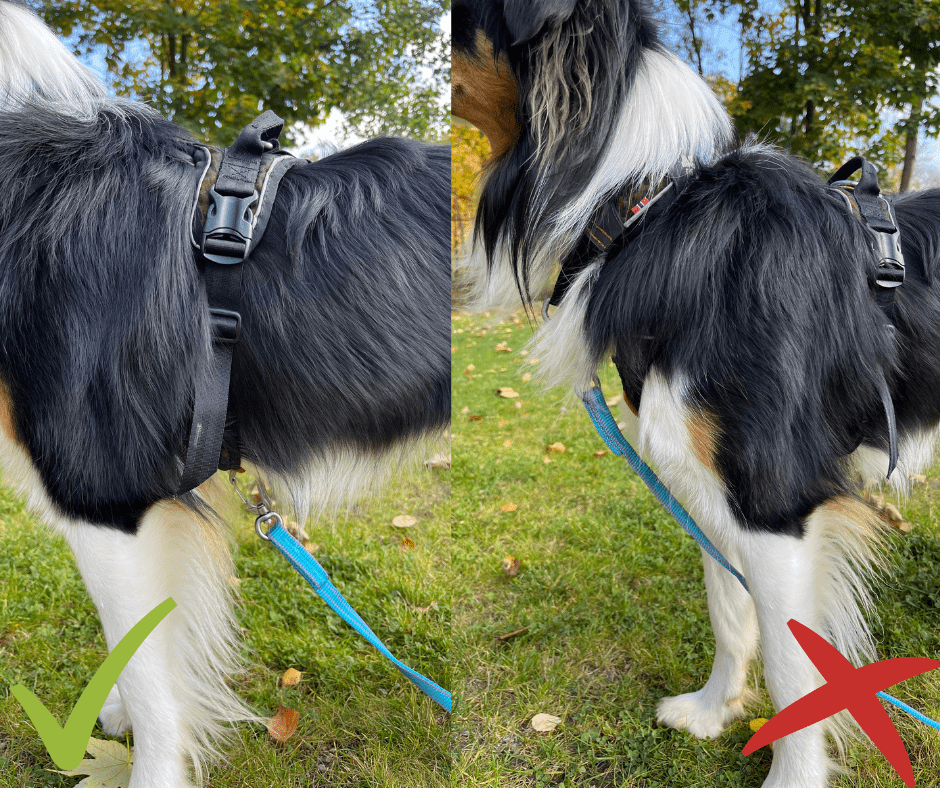
2) Don’t let your dog run too far on the tracking line
The length of the leash determines how far the dog can be from you. For example, if you’re using our 10-meter Saxana, that’s the range you’ve set. As soon as it looks like your dog might run further, you “step on” or hold the leash. You’ll see that your dog will quickly understand and start to stick close to you. This is handy not just in the city.
Keep your dog under control at all times! Don’t let them run off with the leash.
3) Quality of the line is important for your comfort
The line should have a handle for easy holding. The strap should be of good quality, so it doesn’t burn your hands when stopping your dog. And a light color is an advantage, so you can easily find it in tall grass. Our Saxana also comes with a bag so you can neatly roll it up—even when it’s wet, it dries nicely inside. And of course, it should be washable, especially since it’s often necessary in autumn.

A clinking carabiner? When your dog is running with the leash, it’s important to consider the quality of the carabiner. A heavy, large carabiner (bronze) can be noisy and bothersome. That’s why we think a lightweight aluminum one is ideal – your dog won’t even notice it, allowing them to fully focus on the environment and, of course, on you.
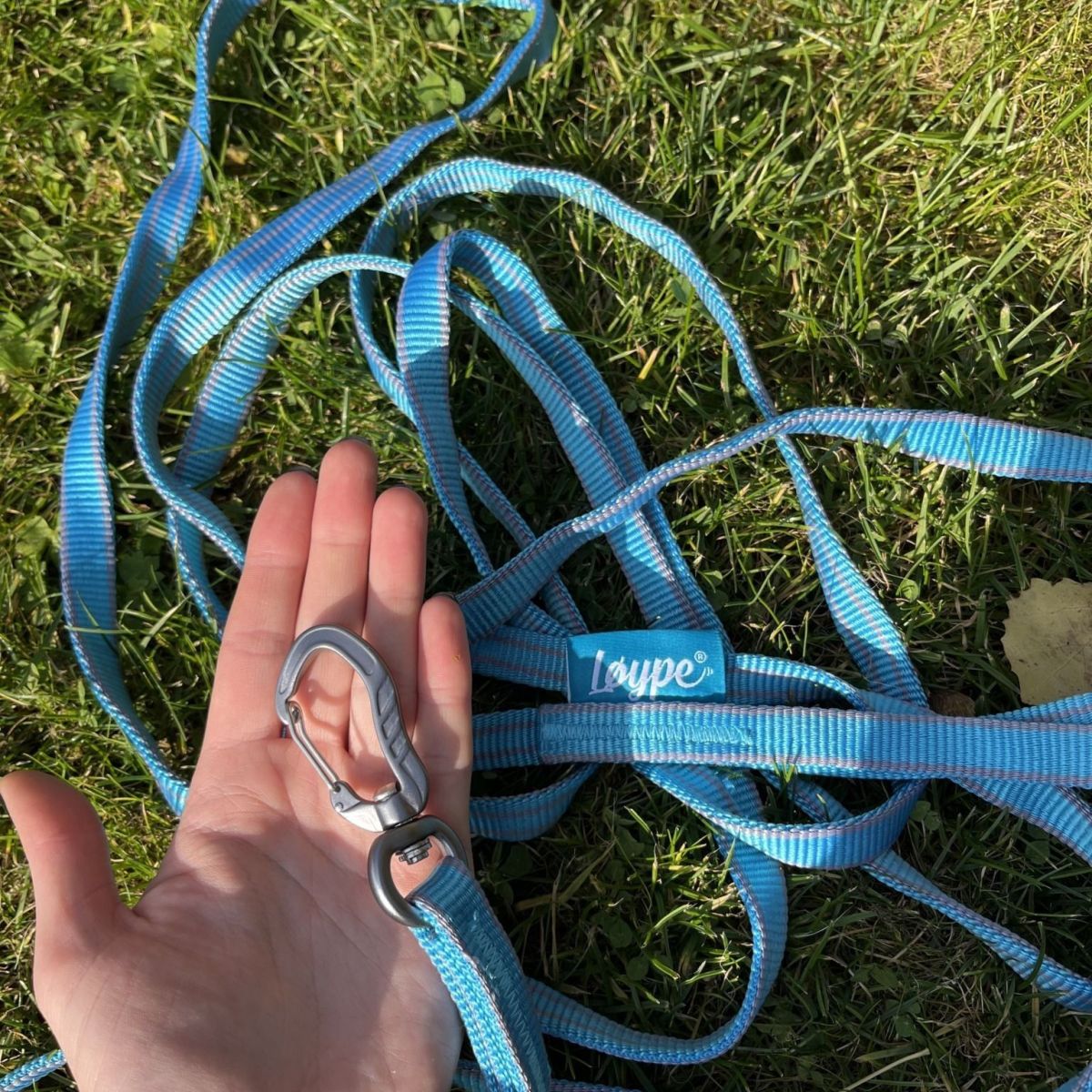
A few practical tips:
- You can attach the line to a belt. This frees up your hands, allowing you to focus fully on your dog.
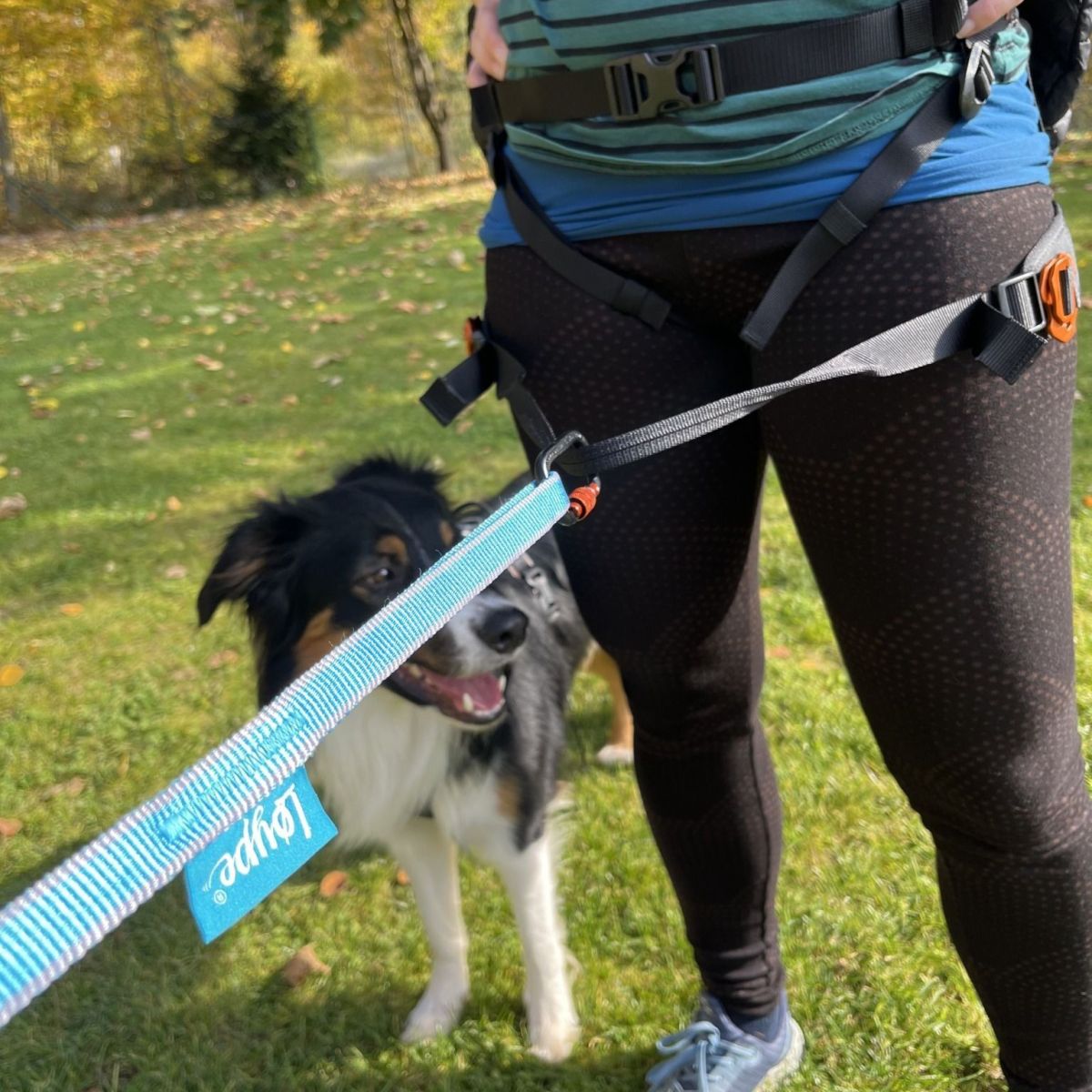
- Create a few knots on the line. This makes it easier to step on or grab the leash quickly without it slipping out of your hand.
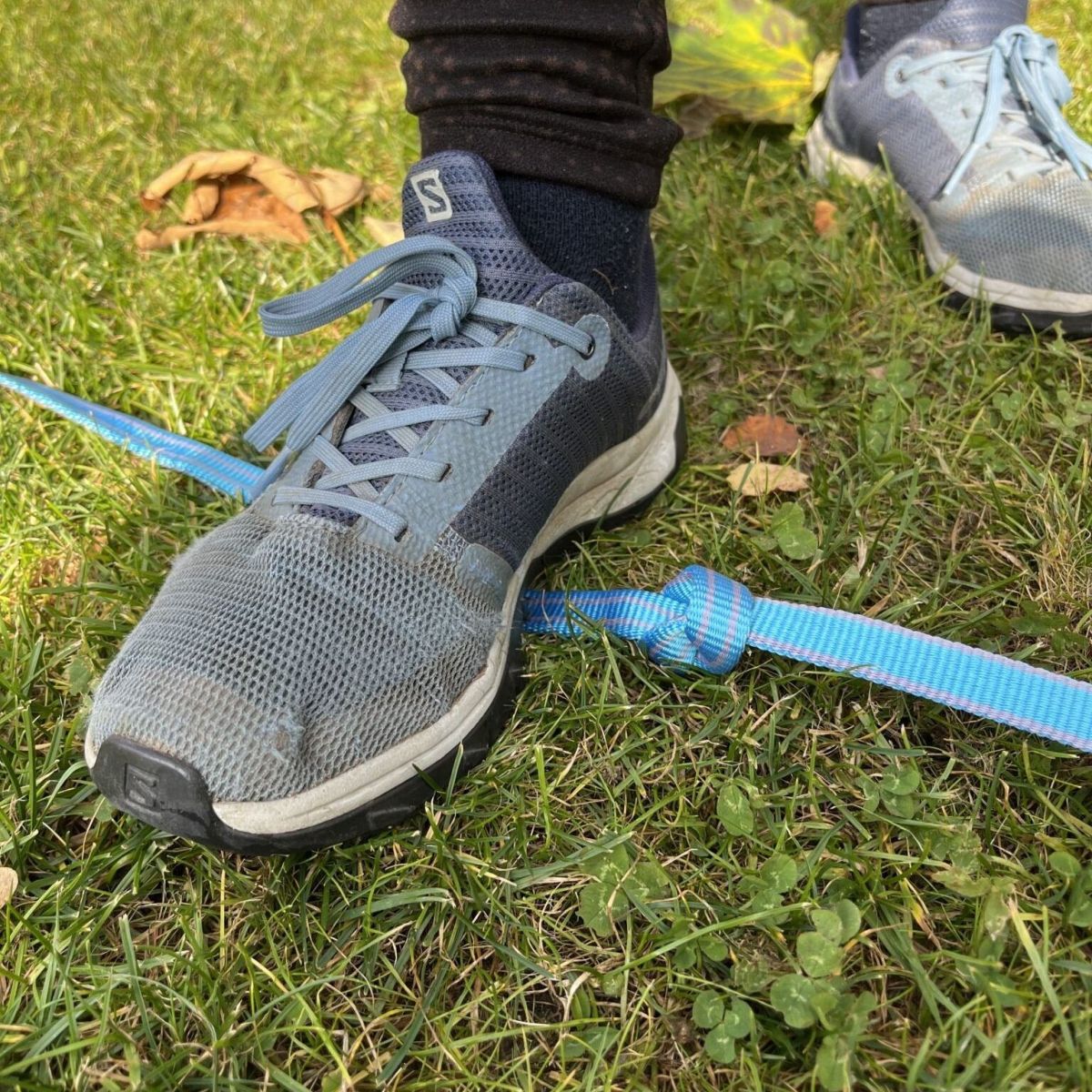
- Watch your turns. Just because your dog is on a leash doesn’t mean you shouldn’t keep an eye on them.
- Always check the area where your dog is running with the tracking line to ensure it’s safe. You don’t want your dog to get caught onto something, which could lead to an unpleasant experience and confusion about what happened.
Other situations where we use a tracking line:
Have you already managed a perfected recall, so it's time to put the tracking line away? Not so fast – there are other uses for it.
Tracking is fun
Every dog has a great sense of smell, which is why they’re used for search and rescue or sport tracking. A tracking line is necessary for this activity according to IGP and other exams. This involves laying a scent trail in a field or meadow, waiting for a certain period, and then having your dog follow the trail. The entire time, they’re on a 10-meter long line. Our Saxana meets the requirements for trial regulations, so you can confidently use it during exams.
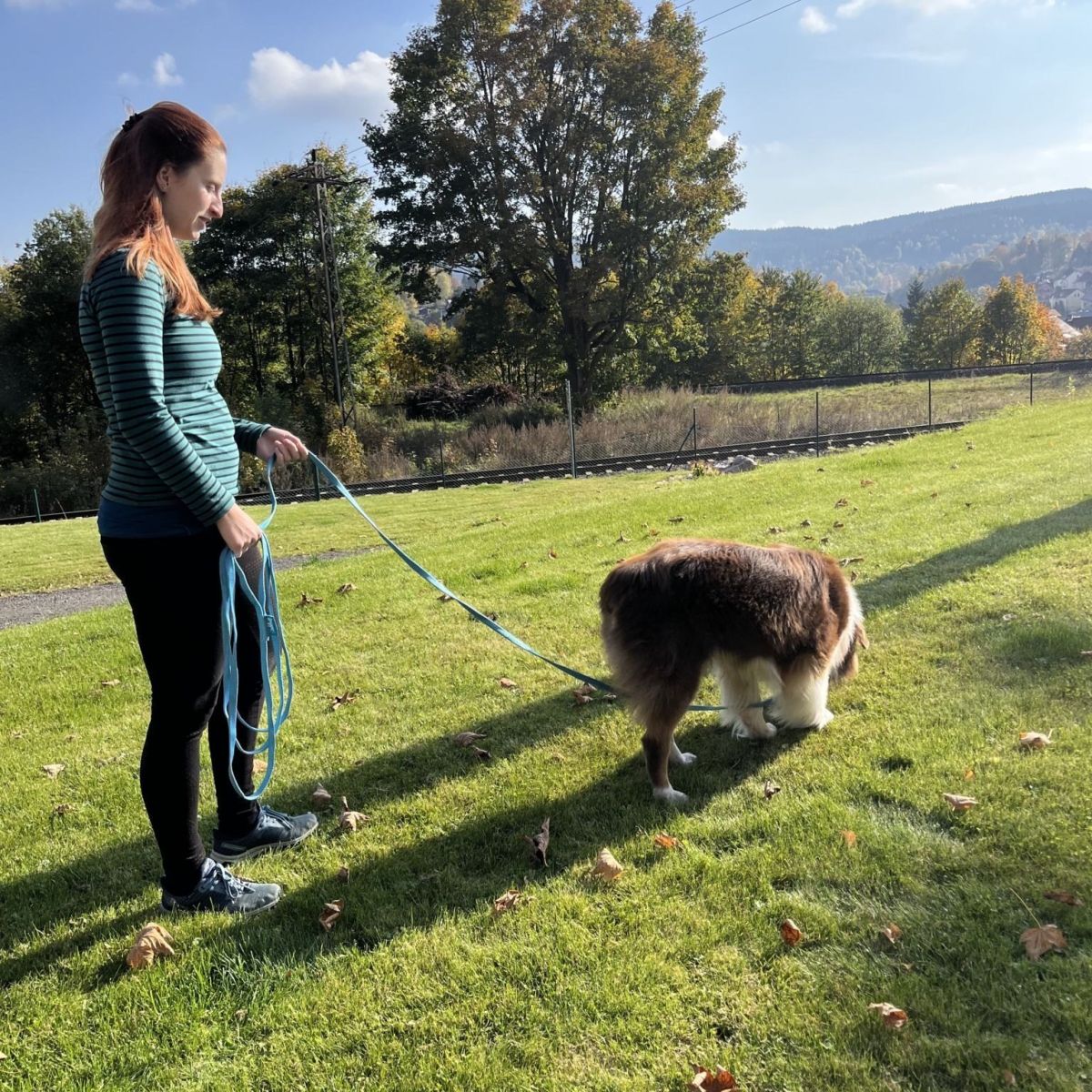
Try Mantrailing
Does tracking seem too complicated? Try mantrailing. In this activity, dogs search for lost persons in urban environments, like cities or neighborhoods. Your dog is also on a tracking line, giving them enough space for natural work while you maintain control in a busy environment.
Introducing your dog to another dog
Many dogs can be aggressive on a leash, growling immediately. But if you’re not quite sure if you want to let your dog off-leash with another dog, don’t hesitate to use a tracking line. Your dog has enough space, and you have the confidence that you can both manage the situation.



















